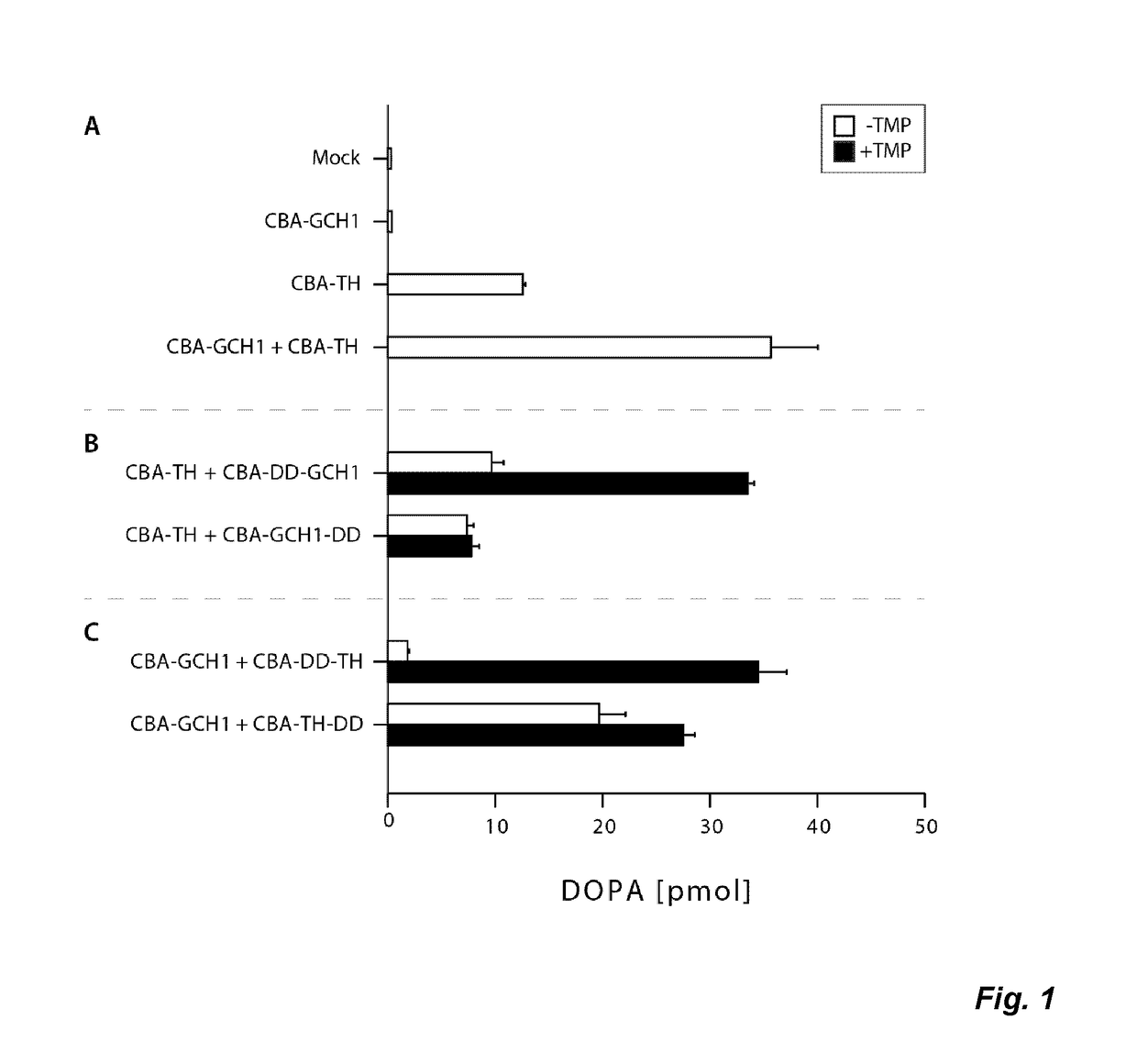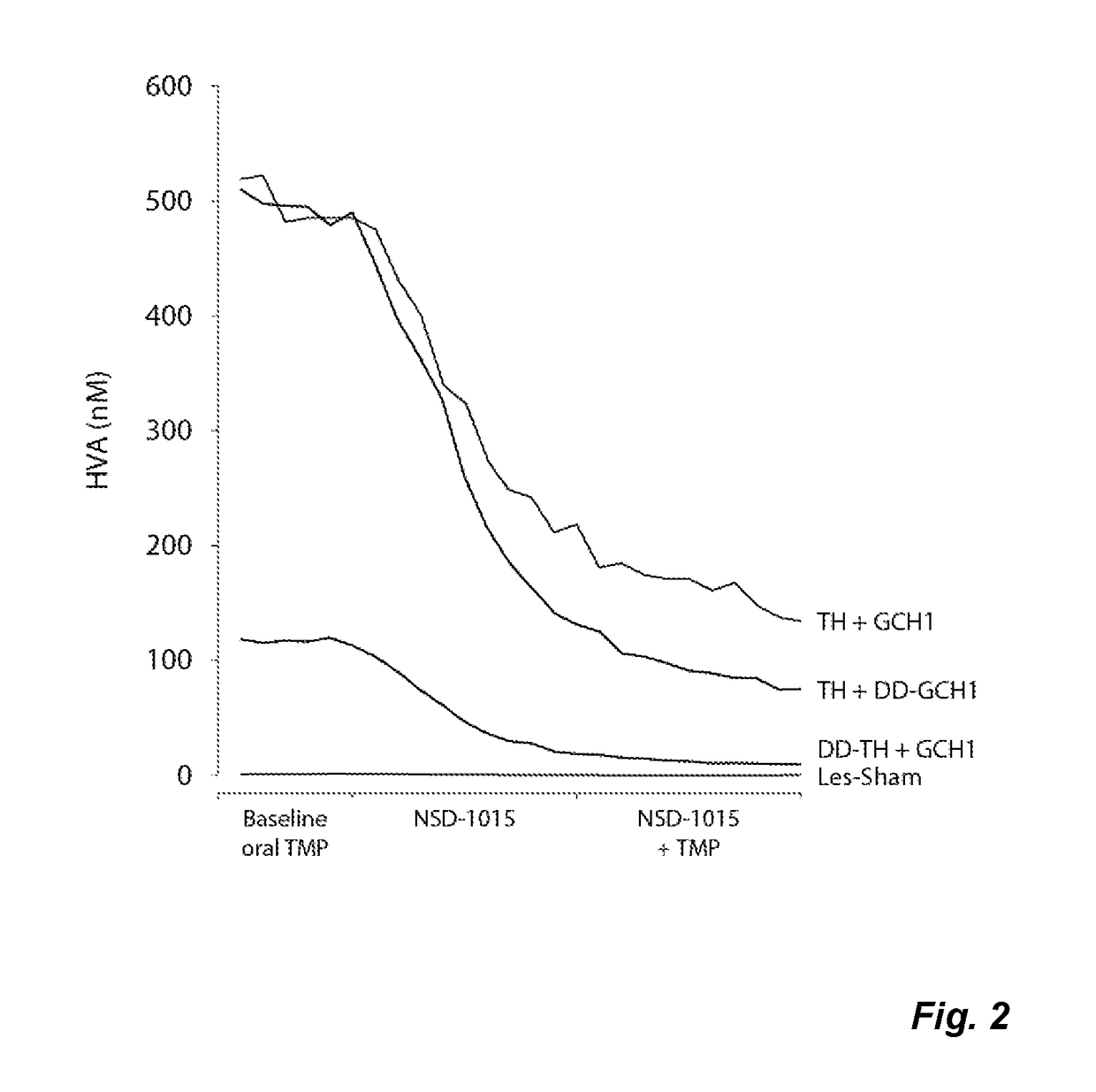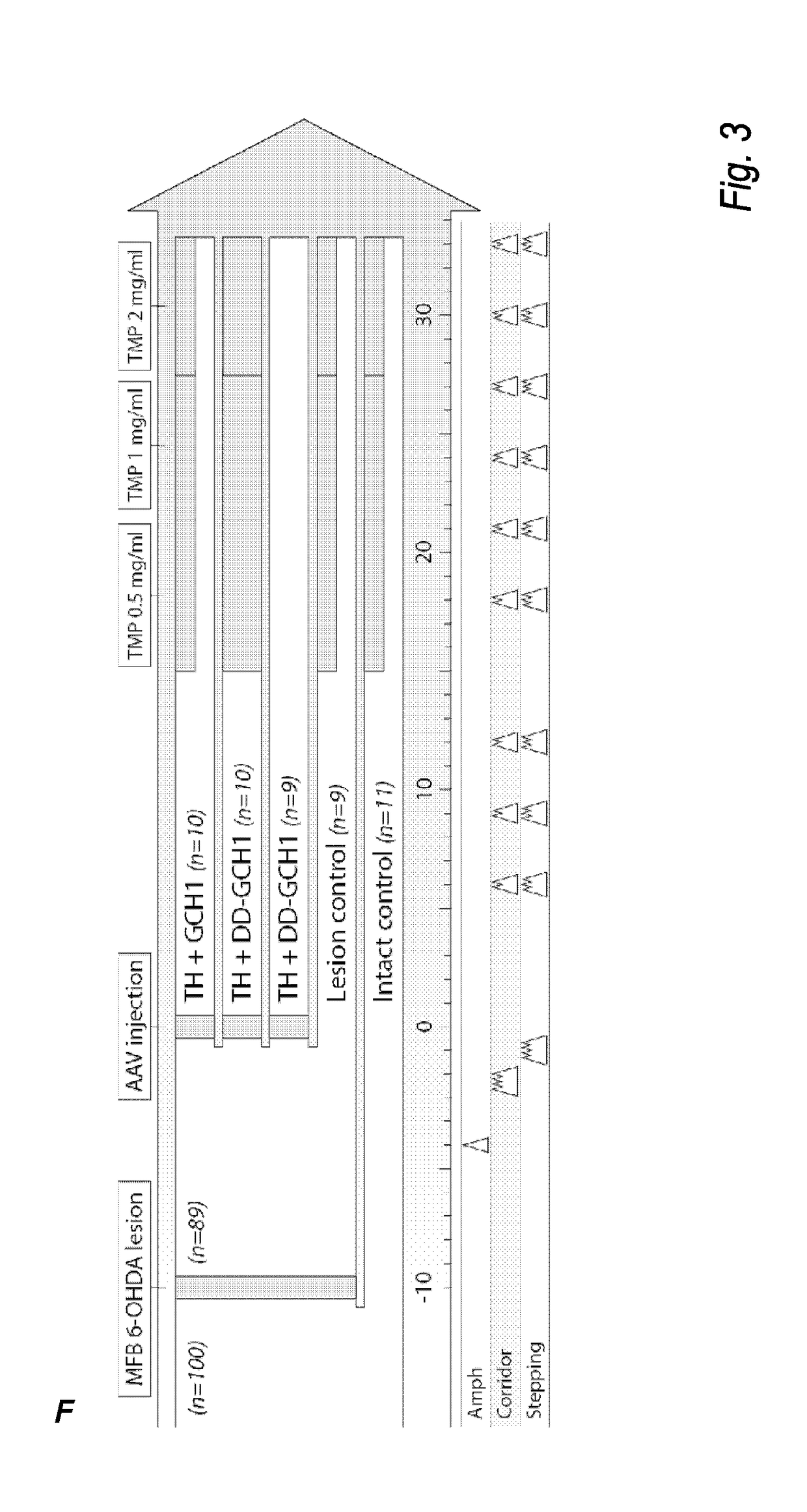Gene expression system and regulation thereof
a gene expression and gene technology, applied in the field of new genes, can solve the problems of complicated conventional symptomatic treatment of parkinson's disease (pd) with long-term levodopa (l-dopa) and achieve the effect of eliminating fluctuations
- Summary
- Abstract
- Description
- Claims
- Application Information
AI Technical Summary
Benefits of technology
Problems solved by technology
Method used
Image
Examples
examples
[0140]The entire study described in this document was conducted in separate parts, starting with an in vitro test followed by a pilot microdialysis experiment. Based on these results, two long-term experiments, denoted Experiment 1 and Experiment 2, were performed. Thirty-six animals were used in Experiment 1, where 4 groups of rats were subjected to an in vivo online microdialysis using one of two protocols as described below. Experiment 2 was designed to assess the long term behavioral effects of the regulated gene expression system tested in this study and included a total of 38 animals (selected from a total of 89 rats with 6-OHDA lesions) with validated severe and stable motor behavioral impairments and 11 intact control rats. The selection criteria used for inclusion in the second study was >6 net turns / min ipsilateral to the lesion side after challenge with amphetamine (2.5 mg / kg), <5% left retrievals in the corridor test, and no left forehand adjusting steps. Collectively th...
PUM
| Property | Measurement | Unit |
|---|---|---|
| Current | aaaaa | aaaaa |
Abstract
Description
Claims
Application Information
 Login to View More
Login to View More - R&D
- Intellectual Property
- Life Sciences
- Materials
- Tech Scout
- Unparalleled Data Quality
- Higher Quality Content
- 60% Fewer Hallucinations
Browse by: Latest US Patents, China's latest patents, Technical Efficacy Thesaurus, Application Domain, Technology Topic, Popular Technical Reports.
© 2025 PatSnap. All rights reserved.Legal|Privacy policy|Modern Slavery Act Transparency Statement|Sitemap|About US| Contact US: help@patsnap.com



